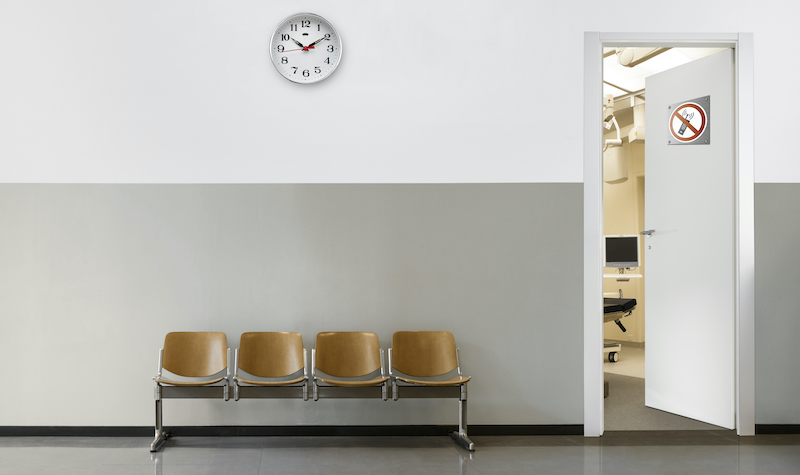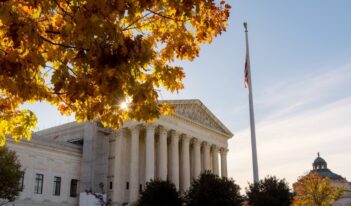
The Trump Administration’s deregulatory response to COVID-19 is temporary and will not have a lasting impact on U.S. health care.
Do the authorization of telehealth practices and the relaxation of patient privacy rules during the COVID-19 pandemic represent the future of health care regulation? Are these changes just emergency measures, or are they indicative of a new normal in health care regulation?
Deregulation was part of the Trump Administration’s agenda even before the COVID-19 pandemic, but the Administration is now presenting deregulation as a strategy both for preventing the spread of the virus and for reactivating the economy. This dual justification for deregulation is easy to put forward because many of the Administration’s most recent deregulatory measures concern health care coverage and medical practices.
But rather than signaling a new normal for the U.S. health care system, these recent regulatory changes appear to be modest emergency changes that, even if they become permanent, will not dramatically transform health care in the United States.
The last major deregulation of health care took place during the Reagan Administration, in which deregulation led to health payers shifting financial risks to hospitals and health providers, ultimately resulting in soaring prices for health care.
Maybe this time deregulation will be different. Emergency regulations, after all, are exceptional. Yet the temptation exists for any administration to exploit an emergency to push for a regulatory agenda that in normal circumstances would only generate political resistance. The Administrative Procedure Act (APA) paves the way for agencies to give in to that temptation, exempting emergency rulemaking from normal notice and comment procedures when they would be “impracticable, unnecessary, or contrary to the public interest.”
Since the federal government’s declaration of the public health emergency earlier this year, the Trump Administration has adopted various policy measures related to health care and medical practices. Relying on the APA’s exemption of normal rulemaking requirements in emergency circumstances, the Centers for Medicare and Medicaid Services issued an interim final rule in late March granting flexibility for health providers to use telehealth services during the COVID-19 pandemic to reduce hospitalizations and visits to medical centers. More recently, President Trump signed an executive order calling on the U.S. Department of Health and Human Services (HHS) to make permanent some of the changes made to telehealth services, aiming to expand the regulation’s scope of coverage and to improve health services in rural areas.
The Trump Administration has issued other reforms through enforcement guidelines for health care and medical practices, rather than by changing any rules or issuing new interim rules. On April 9, for example, HHS announced that it would refrain from imposing penalties for privacy and security violations under the Health Insurance Portability and Accountability Act.
Similarly, HHS, together with the U.S. Department of Labor and the U.S. Department of Treasury, announced that it would not take any enforcement actions against a health insurer that failed to notify individuals 60 days in advance of any change in coverage, if the change added coverage for the diagnosis and treatment of COVID-19.
The government does not need to follow APA rulemaking requirements to issue guidance about the use of its enforcement discretion, as the APA exempts “general statements of policy” and “interpretive final rules” from its rulemaking requirements.
Because of their interim nature, the measures adopted by the current Administration lack force of law and can be changed at any time such as when the pandemic subsides or when a new President assumes office. The deregulatory relief provided in response to the COVID-19 crisis is therefore a transitory policy rather than any lasting legacy.
This approach differs from the comprehensive deregulatory scheme adopted during the Reagan Administration, not only because of the temporary effect of the Trump Administration reforms but also because of the lack of any statutory framework accompanying the recent measures. The Reagan Administration aimed to reduce the budgetary deficiency of federal health programs mainly through the congressional budget process, setting revenue and spending targets that modified the health insurance system by shifting responsibility from employers and unions to employees. There was, indeed, a legislative response parallel to the Reagan Administration’s regulatory approach.
Today, by contrast, the U.S. Congress’s legislative response to COVID-19 is inconsistent with the relaxed regulatory approach of the Administration. The Families First Coronavirus Response Act mandated coverage and administration of COVID-19 testing and forbid any cost sharing with insurance companies in employer-sponsored group health plans. These heavy interventions clearly impact the way health care is administered and financed. And, although they coincide with the aim of facilitating access to health care during the emergency, the interventionist nature of the legislative response to date contrasts with the Administration’s support of the relaxation of health care rules.
The temporary effect of the Administration’s emergency regulatory measures, also contrasted with the permanency of the interventionist approach taken by Congress, illustrates the challenge of fully deregulating health care, even though an unprecedented emergency such as COVID-19 may open the door for a relaxed regulatory agenda.
The low repute of the overall U.S. health care system, which ranks highest in health care spending among the developed nations, might make it seem that it deserves, if anything, more regulation—not less.
In addition, rather than a single deregulatory policy applied evenly across the health care industry, as done during the Reagan Administration, the federal government’s current relief measures appear more of a hybrid between interventionist legislative mandates and deregulatory executive branch measures applied to a narrow set of issues.
Will this hybrid model die out once the pandemic runs its course? Or does it, perhaps, signal that a new regulatory approach to U.S. health care will be here to stay?
For now, the Trump Administration’s deregulatory responses to COVID-19 look more like emergency policies rather than a Trojan horse hiding a new future for health care regulations. Even if the Administration’s reforms become permanent, the United States will still be a long way from the establishment of any significant “new normal” in its health care system.




